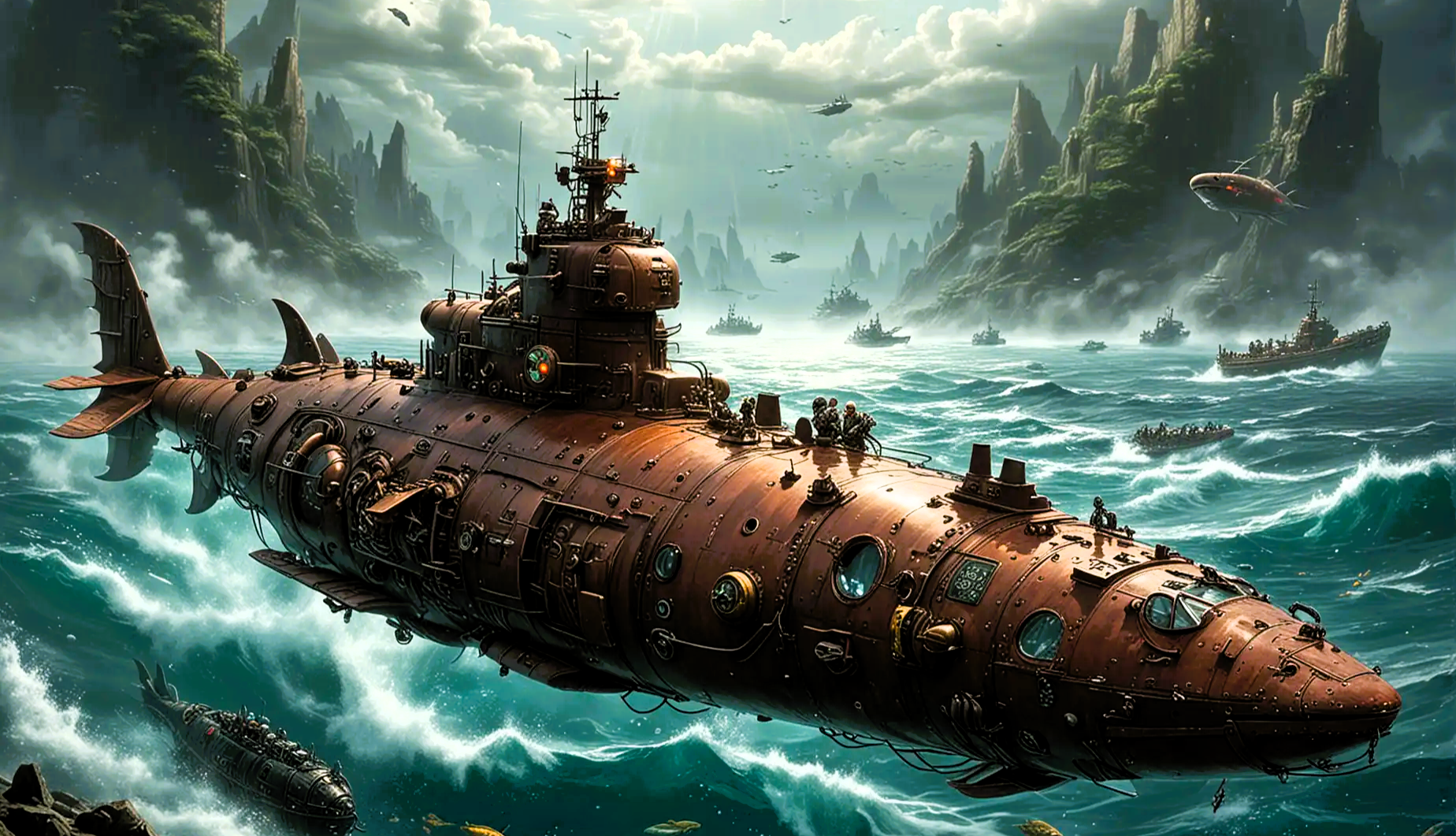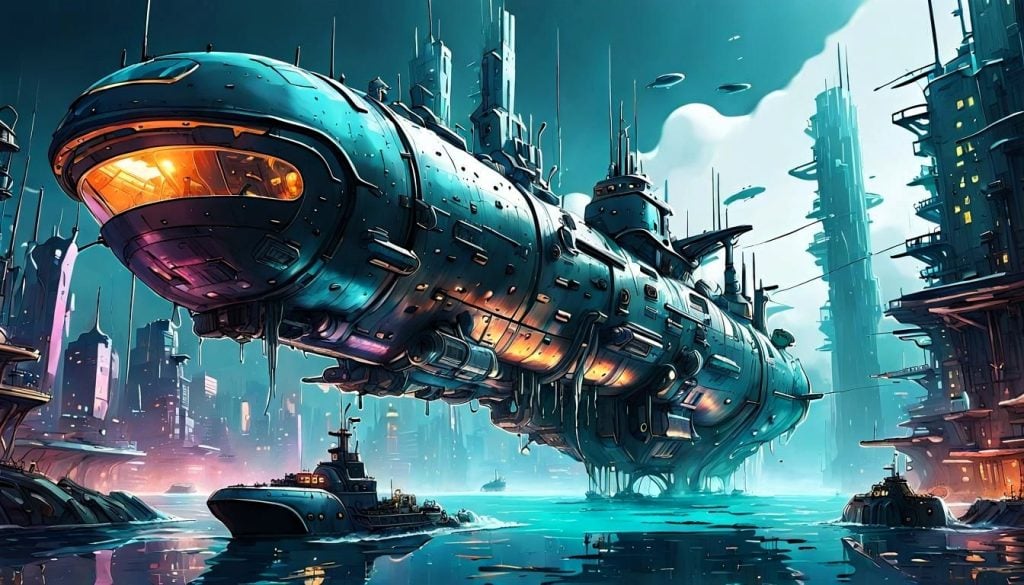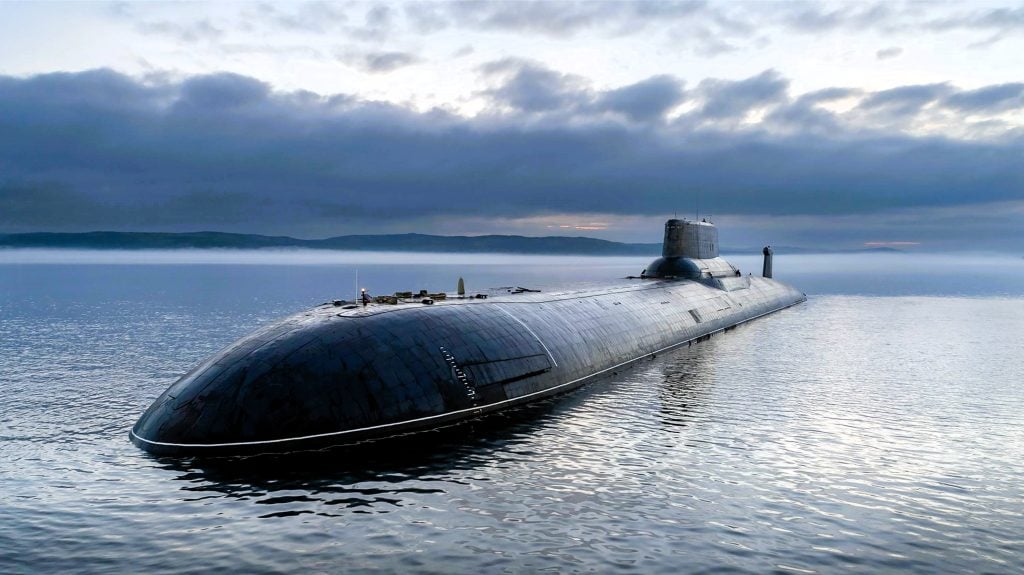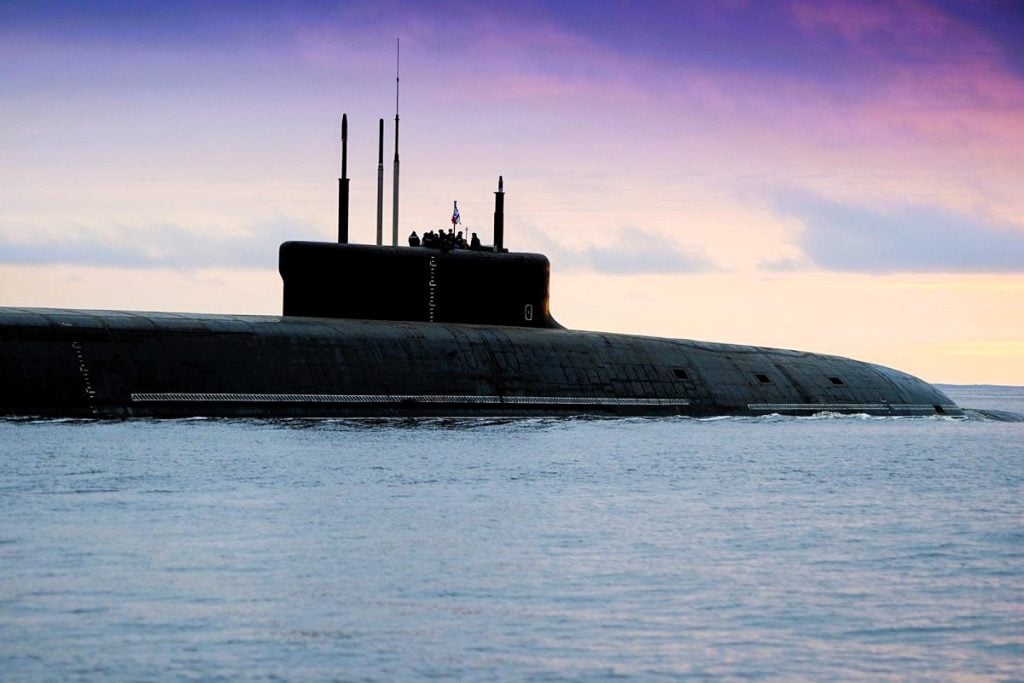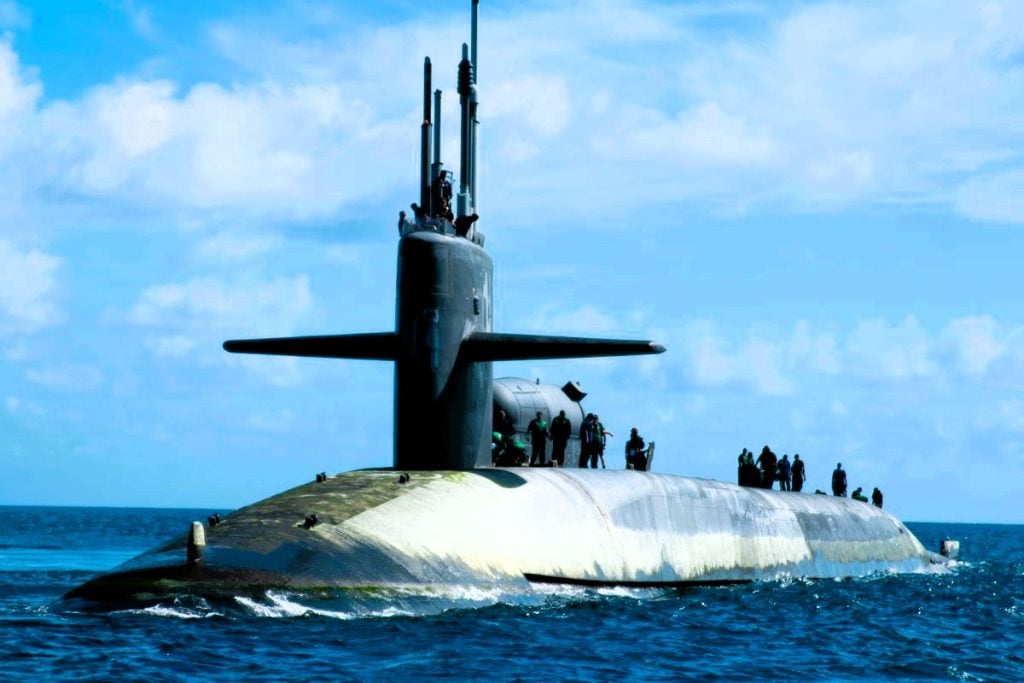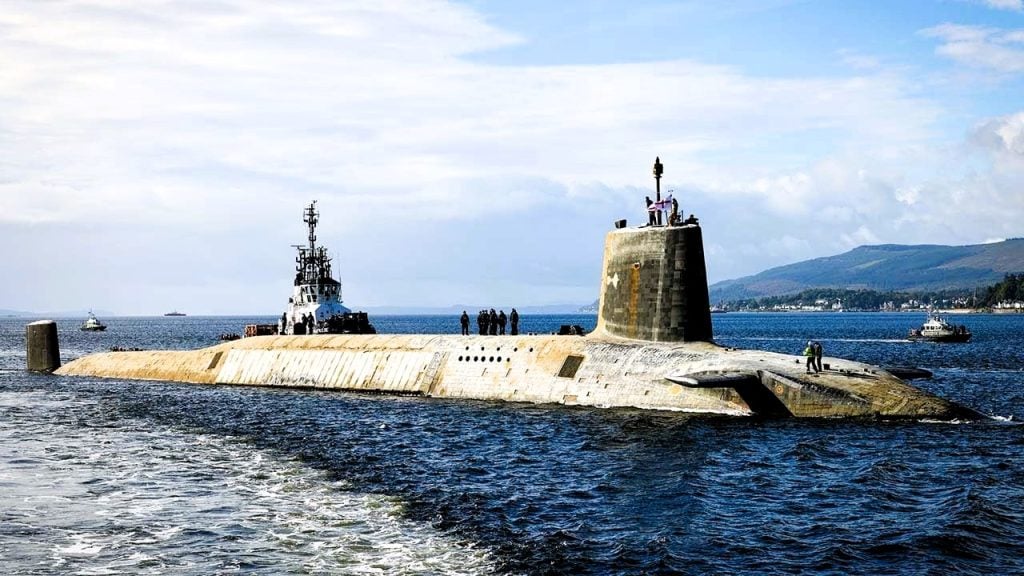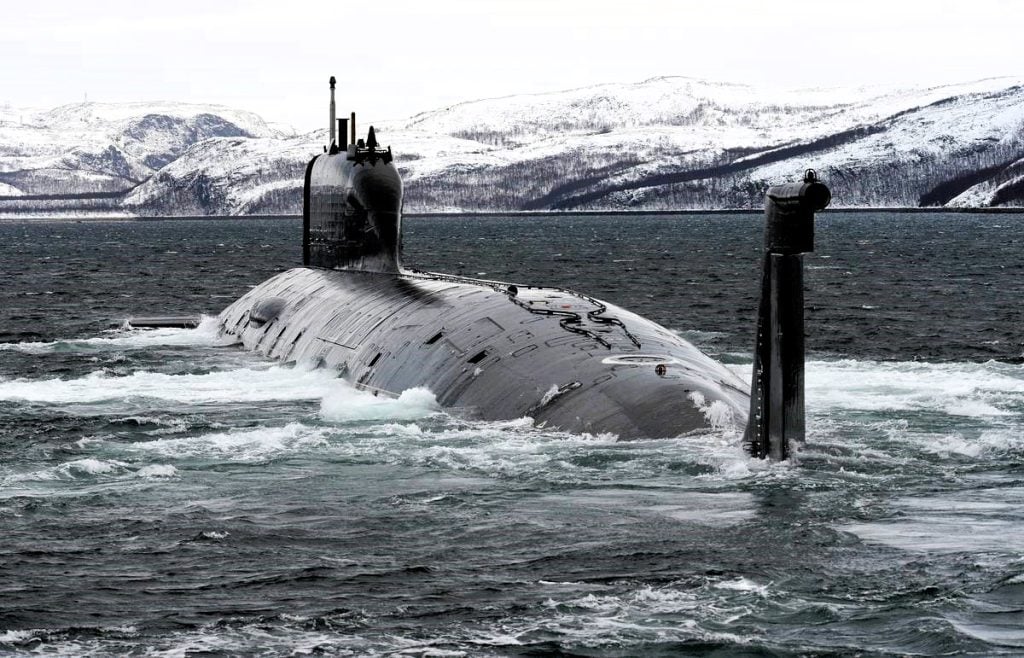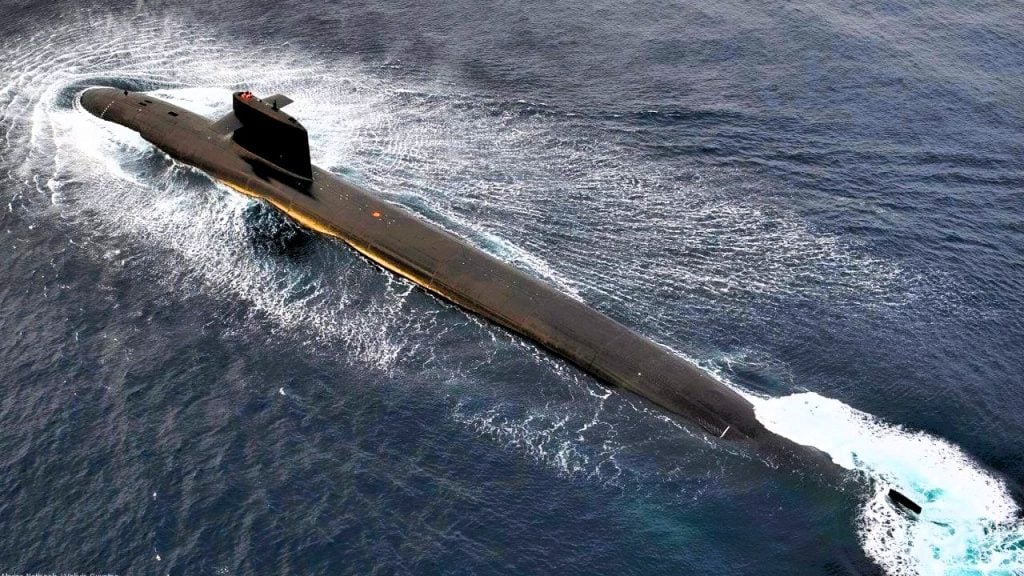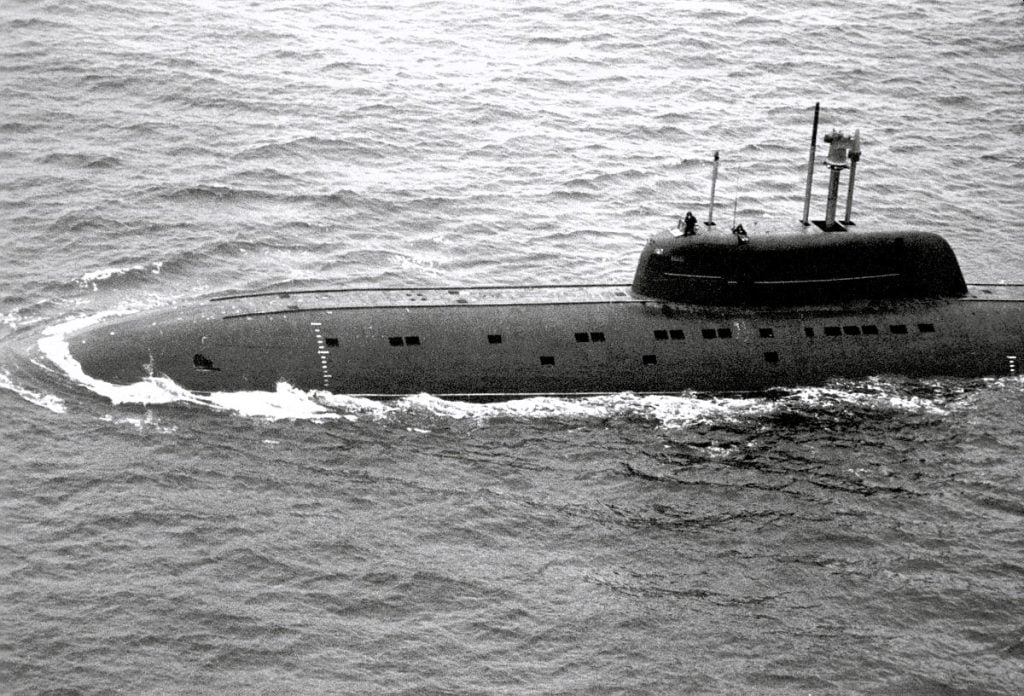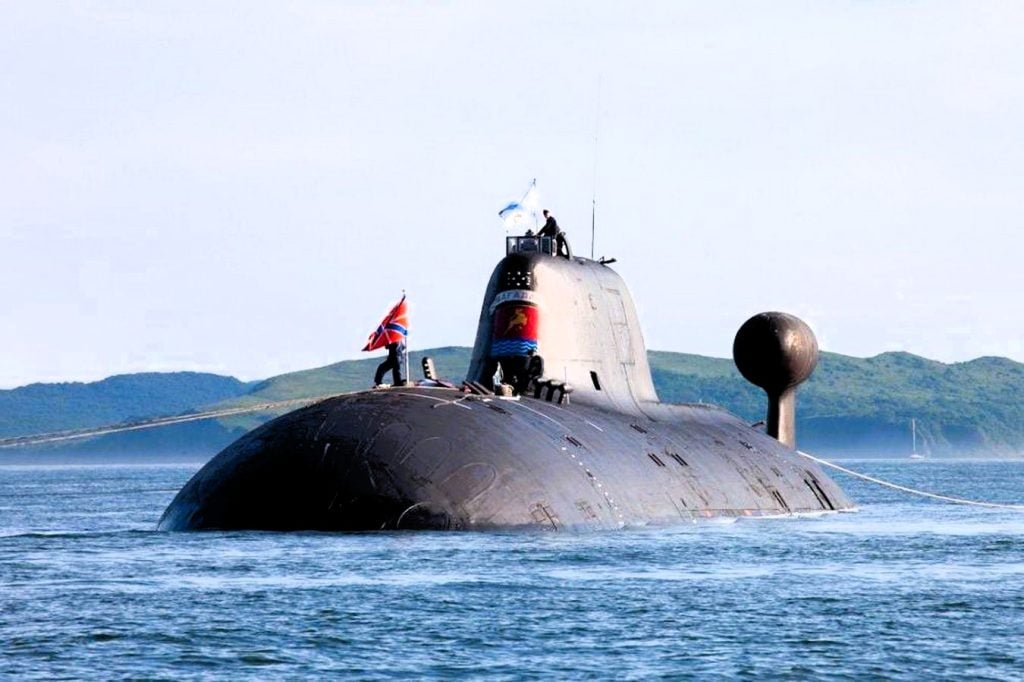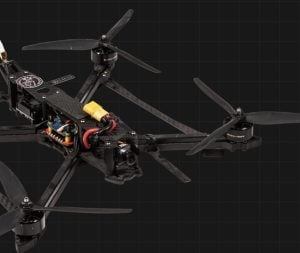Submarines have long been the silent sentinels of naval warfare, prowling the depths and striking with devastating precision. From the steam-powered pioneers of the American Revolution to the nuclear-powered behemoths of the Cold War, these underwater leviathans have evolved into formidable instruments of power and deterrence. As nations strive to assert their maritime dominance, the race to build the largest, most advanced submarines has become a global obsession.
In this comprehensive guide, we delve into the 10 Biggest Submarines in the World Right Now currently in service, exploring their awe-inspiring dimensions, formidable armaments, and technological marvels. From the colossal Typhoon-class giants of Russia to the stealthy Yasen-class cruise missile submarines, these aquatic titans represent the pinnacle of underwater engineering. Prepare to be captivated by the sheer scale and might of these underwater fortresses as we uncover the secrets behind their unparalleled capabilities.
11 Top Russian Fighter Jets 2024
1. Typhoon Class (Russia/Project 941 Akula Class)
Towering over their contemporaries, the Typhoon-class submarines, also known as the Project 941 Akula-class, stand as the largest submarines ever constructed. These nuclear-powered behemoths, built by the Soviet Union during the Cold War era, were designed to confront the United States and its allies in the ongoing geopolitical struggle.
Measuring an astounding 175 meters in length and 23 meters in width, with a draft of 12 meters, these colossal vessels displaced a staggering 48,000 tonnes. Equipped with 20 massive R-39 “Rif” intercontinental ballistic missiles, also known as the SS-N-20 Sturgeon, these submarines were veritable floating fortresses. Complementing their formidable missile armament, they also carried RSM-52 missiles and were outfitted with a state-of-the-art magneto-hydrodynamic drive system, allowing for silent and powerful attacks on their adversaries.
Featuring a unique multi-hull design and divided into 19 separate compartments, the Typhoon-class submarines were engineered to traverse the treacherous Arctic waters. Their ice-breaking capabilities, reinforced stern fin, and retractable systems made them well-suited for operations in the harsh polar environment. Capable of reaching surface speeds of 12 knots and submerged speeds of up to 25 knots, these behemoths were the epitome of Soviet submarine engineering.
2. Borei-Class (Russia/Project 955 Borei)
Ushering in a new era of Russian submarine design, the Borei-class, or Project 955 Borei, represents the fourth generation of submarines constructed by Russia since the end of the Soviet era. Designed to replace the aging Delta III, Delta IV, and Typhoon-class submarines, the Borei-class was envisioned to serve as the backbone of the Russian naval forces.
Measuring 170 meters in length and 13 meters in width, with a displacement of 24,000 tonnes, the Borei-class submarines are smaller in size compared to their Typhoon-class predecessors. However, they still pack a formidable punch, capable of carrying 16 Bulava-SLBM missiles and 6 SS-N-15 missiles.
Designed by the Rubin Marine Equipment Bureau and constructed at the Sevmash Shipyard, the Borei-class vessels feature an advanced hull design for reduced noise levels and an AEU steam turbine propulsion system. Interestingly, they are the first Russian submarines to utilize pump-jet propulsion technology, a significant departure from traditional propeller-driven designs.
Powered by an OK-650 nuclear reactor, the Borei-class submarines can achieve a submerged speed of 25 knots and accommodate a crew of 107. With their improved stealth capabilities and modernized armaments, these fourth-generation submarines represent a crucial component of Russia’s naval strategy in the 21st century.
3. Ohio-Class (United States)
Ranking as the third-largest submarines in the world, the Ohio-class vessels were commissioned by the United States Navy between 1977 and 1998. Designed to serve as a formidable nuclear deterrent, these submarines are equipped with an impressive arsenal of 24 Trident II missiles, each with a range of approximately 12,000 kilometers.
Displacing 18,750 tonnes, the Ohio-class submarines boast four decks and can accommodate a crew of up to 90 personnel. Powered by a pressurized water reactor and two turbines, these vessels have a lifespan of 40 years and will be gradually replaced by the newly developed Columbia-class submarines by the end of this decade.
Featuring a length of 170 meters and a width of 13 meters, the Ohio-class submarines are endowed with advanced technologies, including a Lockheed Martin sonar processing system and an MK118 digital fire control system. Equipped with eight vertical launch systems and four 533-millimeter torpedo tubes, these submarines carry more than 50% of the United States’ thermonuclear arsenal, solidifying their status as formidable strategic assets.
4. Oscar Class (Russia/Project 949 A Antey Class)
The Oscar-class, or Project 949 A Antey-class, represents a formidable fleet of Russian cruise missile submarines that are part of the country’s Northern Fleet. These vessels, built at the Severodvinsk shipyard, measure 155 meters in length and 18 meters in breadth, accommodating advanced electronics systems and a sophisticated noise-cancellation system.
Distinguishing features of the Oscar-class submarines include a larger fin and seven-blade propellers, as well as a double-hull design and a secret emergency escape capsule capable of accommodating up to 100 people. Equipped with 24 SS-N-19 missiles with a range of 600 kilometers, these submarines pack a considerable punch in their cruise missile armament.
With a displacement of 24,000 tonnes and an underwater cruising speed of around 30 knots, the Oscar-class vessels are powered by a nuclear reactor and divided into ten compartments that can be isolated in the event of an accident. As part of the ongoing modernization efforts, these submarines are undergoing upgrades to extend their operational lifespan and maintain their relevance in the contemporary naval landscape.
5. Vanguard Class (United Kingdom)
Representing the United Kingdom’s contribution to the global submarine arms race, the Vanguard-class vessels were constructed between 1985 and 1999 as part of the Trident nuclear program. These ballistic missile submarines, with their homeport at Her Majesty’s Naval Base Clyde in Scotland, are the largest submarines ever built in Britain.
Measuring 150 meters in length, the Vanguard-class submarines have a displacement of 15,900 tonnes and can reach a submerged speed of 25 knots. Equipped with a Rolls-Royce PWR 2 pressurized water reactor and a pump-jet propulsion system, these vessels can remain submerged for extended periods, with a crew capacity of 149 personnel.
The Vanguard-class submarines are armed with 16 Trident II D5 nuclear missiles, each with a target range of 5,000 miles. Additionally, they are equipped with four torpedo tubes and 16 Spearfish torpedoes, capable of engaging targets up to 65 kilometers away. These vessels also boast the finest sonar systems in the world, capable of detecting ships over 50 miles away, as well as advanced thermal imaging and optics technology.
As the United Kingdom prepares to transition to the next-generation Dreadnought-class submarines in the 2030s, the Vanguard-class will continue to serve as the backbone of the country’s nuclear deterrence strategy, ensuring the preservation of its maritime supremacy.
10 Largest Aircraft Manufacturers In The World Today
6. Yasen/Graney Class (Russia)
Representing Russia’s newest class of cruise missile submarines, the Yasen, also known as the Graney-class, is a testament to the country’s ongoing naval modernization efforts. Designed by the Malakhit Marine Engineering Bureau and constructed by the Sevmash shipyard, the first vessel of this class, the Severodvinsk, entered service in 2013, with two additional submarines, Kazan and Novosibirsk, joining the fleet in 2021.
Measuring 140 meters in length and with a displacement of 14,000 tonnes, the Yasen-class submarines are based on earlier designs such as the Akula and Alfa-class, but with significant improvements in combat capabilities. Equipped with 32 cruise missiles housed in ten launch pads, these vessels are capable of executing land-attack missions, a first for Russian submarine forces.
Featuring a single-hull design made of steel and advanced automation systems, the Yasen-class submarines eliminate the need for manual control, enhancing their operational efficiency. Additionally, they are powered by a fourth-generation nuclear reactor, providing a 30-year lifespan without the need for refueling, and incorporate a noise reduction system driven by a KTP-6 reactor, making them stealthier than their predecessors.
With an estimated construction cost of over $1 billion per submarine, the Yasen-class represents the pinnacle of Russian submarine engineering, boasting the latest in stealth, firepower, and technological innovations.
7. Delta Class (Russia)
The Delta-class submarines played a pivotal role in shaping the backbone of the Russian submarine fleet during the 1970s. Comprising four sub-classes – Delta I, Delta II, Delta III, and Delta IV – these ballistic missile submarines were instrumental in maintaining the country’s nuclear deterrence capabilities throughout the Cold War era.
Measuring 139 meters in length and 12 meters in width, with a displacement of 10,000 tonnes, the Delta-class vessels were equipped with various missile systems, including the Tobol-B and Cyclone-B navigation systems, to enhance their accuracy and range. The Delta I submarines carried 12 missiles and patrolled the Norwegian and Barents Seas, while the Delta II vessels were lengthened by 16 meters and carried 16 missiles, with the addition of a noise cancellation system and four extra launch tubes.
The Delta III submarines were further refined, featuring a double-hull design and the capability to strike targets within a range of 7,000 to 8,000 kilometers. The Delta IV, built between 1981 and 1993, are still operational and part of the Russian Northern Fleet, with their decks featuring an acoustic coating and a D-9RM launch system.
Although all Delta-class submarines have been decommissioned or scrapped by the early 2000s, their legacy as the cornerstone of the Soviet and Russian submarine forces remains an integral chapter in the history of naval warfare.
8. Triomphant Class (France)
After the retirement of the Le Redoutable-class submarines in the 1990s, the French naval fleet welcomed the Triomphant-class as its new generation of ballistic missile submarines. The first vessel of this class was launched in 1997, and four Triomphant-class submarines are currently in active service.
Measuring 138 meters in length and 12.5 meters in width, with a displacement of 14,335 tonnes, the Triomphant-class submarines are capable of reaching a submerged speed of 25 knots and an average surface speed of 17 knots. These vessels can remain submerged for up to nine weeks, a testament to their impressive endurance.
The first three Triomphant-class submarines are equipped with 16 M45 ballistic missiles, each carrying a TN-71 thermonuclear warhead with five multiple independently targetable reentry vehicles (MIRVs) and a range exceeding 8,000 kilometers. The fourth vessel, Le Terrible, entered service in 2010 and is armed with the more advanced M51 missile system, boasting an even wider targeting range.
As the French naval forces prepare for the introduction of the third-generation high-tech submarines by 2035, the Triomphant-class will gradually be phased out, with the sonar system for the upcoming class being developed by the domestic company Thales.
9. Sierra Class (Russia)
The Sierra-class, comprising the Project 945 Barrakuda and Project 945 A Kondor submarines, represents a formidable fleet of Russian attack submarines constructed during the Cold War era. These vessels, known for their lightweight titanium hulls, were capable of attaining a maximum speed of 35 knots, a remarkable feat for their time.
The Sierra I-class submarines measure 112.7 meters in length and displace 8,300 tonnes. Powered by an OK-650 water reactor, they were able to reach greater underwater depths than their American counterparts. These vessels were equipped with six tubes for launching 40 torpedoes and anti-submarine missiles, while the Sierra II-class featured double the number of tubes and a fully mechanized reloading system.
Despite their impressive capabilities, the Sierra-class submarines were notoriously difficult to construct and quite costly. Their only weakness was the MGK-500 “Shark Gill” sonar system, which, although new to Russia, was less accurate than the sonars fitted on American submarines of the time.
Although the Sierra-class submarines have since been decommissioned, their legacy as formidable attack vessels and their contribution to the technological advancements in Soviet submarine design remain an important chapter in the annals of naval history.
10. Akula Class (Russia)
Rounding out our list of the 10 biggest submarines in the world is the Akula-class, a fleet of attack submarines launched by Russia in 1986. These double-hulled vessels, offering greater buoyancy than their Western counterparts, are equipped with a unique wake detection system capable of sensing temperature changes, providing them with an enhanced stealth advantage.
Measuring 110 meters in length and with an underwater displacement of 12,770 tonnes, the Akula-class submarines are armed with four launch pads on each side, capable of utilizing Type 53 and Type 65 torpedoes. While they can theoretically carry 28 cruise missiles with a striking range of 3,000 kilometers, the INS Chakra, the sole Akula-class submarine leased to India, is limited to a target range of 300 kilometers due to international arms control treaties.
Renowned for their quieter operation compared to other Soviet submarines, the Akula-class vessels also feature a secret rescue chamber capable of accommodating up to 90 people in the event of an emergency. While nine Akula-class submarines are currently part of the Russian Northern and Pacific fleets, the INS Chakra continues to serve as a testament to the global reach and technological prowess of these formidable attack submarines.
Top 5 Japanese Aircraft of WWII
Conclusion
In the realm of naval supremacy, the submarine stands as a testament to the ingenuity and technological prowess of nations. From the colossal Typhoon-class behemoths of Russia to the stealthy Yasen-class cruise missile submarines, the 10 biggest submarines in the world represent the pinnacle of underwater engineering and strategic deterrence.
As the global maritime landscape continues to evolve, these aquatic titans will undoubtedly play a crucial role in shaping the balance of power and ensuring the security of nations. The sheer scale, firepower, and technological sophistication of these submarines serve as a stark reminder of the relentless pursuit of dominance in the underwater domain.
As we bid farewell to these magnificent vessels, one can’t help but wonder what the future holds for submarine design and the ongoing naval arms race. One thing is certain: the titans of the deep will continue to captivate and awe the world, solidifying their place as the silent guardians of the seas.
FAQs
1. Which is the largest submarine in the world?
The BS-329 Belgorod, a special-purpose unit and carrier of 2M39 Poseidon nuclear torpedoes, is the world’s largest submarine.
2. Who has the most powerful submarine in the world?
Five attack submarines are recognized as the world’s best today: Russia’s Sierra II Class (Project 945A Kondor) and Yasen-Class (Project 885), the UK’s Astute-class, and the U.S.’s Virginia-class and Seawolf-class.
3. Which is the largest submarine in India?
The INS Arihant, the largest submarine in the Indian Navy’s arsenal, is part of the Arihant class of ballistic missile submarines (SSBNs).
4. Who has the best navy in the world?
The United States Navy (USN) is the largest and most powerful naval force in the world, with unparalleled operational capacity and global reach.
5. Which country has maximum submarines?
China
